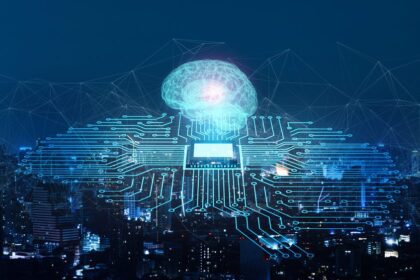
In the ever-evolving sphere of technology, a ground-breaking innovation that has recently captured significant attention is edge computing. The influence of edge computing continues to swell, with businesses and industries recognising its potential to transform the way data is processed and analysed. This blog takes a deep dive into the latest trends in edge computing that are continuing to reshape the technological landscape in 2024.
1. 5G Integration: Accelerating Connectivity and Real-Time Possibilities
The introduction of 5G networks has proven to be a game-changer for edge computing, bringing about increased speed and reduced latency. The seamless communication enabled by 5G technology between devices and edge computing infrastructure opens up new possibilities for real-time applications, including augmented reality (AR), virtual reality (VR), and autonomous vehicles. The synergy between edge computing and 5G ensures not only swift data processing but also instant accessibility to imagery and video. The combination of 5G, cloud, and edge computing allows for more powerful and resource-intensive applications to be run on mobile devices. This enables users to access and process data on the cloud seamlessly, enhancing the capabilities of mobile computing.
2. AI at the Edge: Redefining Intelligence in Diverse Contexts
Artificial Intelligence (AI) has liberated itself from the constraints of centralised cloud servers and has found a new home in edge computing. By bringing AI capabilities closer to the source of data generation, faster decision-making is enabled, reducing reliance on cloud resources. This deployment spans a diverse range of devices, from smartphones to industrial machinery, allowing for versatile implementations in applications such as facial recognition, natural language processing, and predictive analytics. The energy-efficient nature of edge AI, crucial for battery-powered devices and IoT applications, empowers devices to execute AI tasks independently, even without a constant internet connection.
3. Edge-to-Cloud: Streamlining Coordination for Seamless Operations
As edge computing gains prominence, there is a growing need for efficient coordination between edge devices and cloud infrastructure. The edge-to-cloud trend emerges to facilitate seamless management and deployment of applications across a distributed network of devices. This approach optimises resource scalability and ensures a cohesive ecosystem for edge computing solutions. By reducing the costs associated with transmitting and storing large volumes of data in the cloud, organisations can minimise their reliance on extensive cloud resources, potentially leading to lower operational costs.
4. Security: Fortifying Hardware Traits for Robust Protection
In response to a 2023 report by IBM, revealing that managing a data breach costs an average of $4.45 million, security becomes a focal point in 2024. The emphasis is on enhancing hardware traits, such as platform modules, to establish more robust security foundations for devices. Measures like encryption, secure bootstrapping, decentralised identity management, and algorithmic encryption are set to witness continuous improvements, addressing the escalating need for heightened security in an increasingly interconnected world.
As we go into the heart of 2024, these trends hold the promise of redefining the technological landscape, introducing innovations that pave the way for a more connected, efficient, and secure future.


